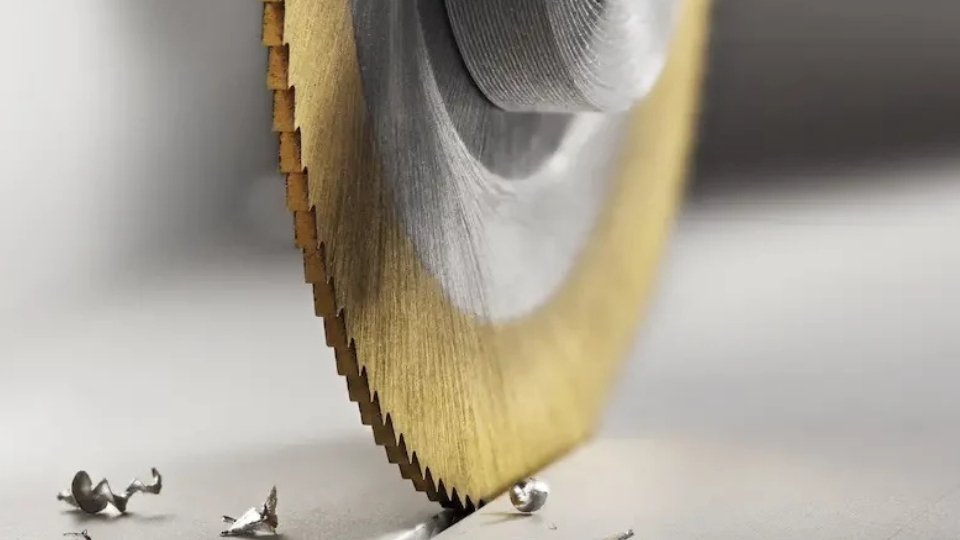
Through profile milling you can efficiently produce accurate profiles and contours on material surfaces. The CNC (Computer Numerical Control) machine performs operations to precisely follow pre-programmed outlines that specify the profile of workpieces. The aerospace and automotive sectors, as well as tooling operations, incorporate this technique to create complex-shaped components.
When performing profile milling operations, it is compulsory to choose appropriate cutting tools. It’s a main technical consideration. Specialized cutting tools, along with inserts, are selected specifically for the material workpiece to achieve uniform, smooth cuts with a professional appearance. CNC machines allow manufacturers to achieve precision profiles.
Feed rates and toolpath strategies are other essential technical aspects that require attention to detail. The programmed settings specify both speed and cut depth blend every tool movement. When these variables get optimized they produce superior quality finishes. Therefore, it guarantees part accuracy leading to time and cost savings for industries maintaining superior quality standards.
Manufacturers use profile milling techniques to produce exact geometric shapes in line with precise surface qualities at exceptional precision levels.
In machining applications, profile milling allows users to create precise custom-shaped profiles as well as contours inside materials. It usually operates independently from traditional milling because it specializes in generating parts with designated profiles, including curved and angular complex shapes. Profile milling serves as the primary manufacturing approach in automotive, aerospace, and mold-making sectors due to the high demand for complex, precise designs.
The cutting tool operates under computerized control. It is used to supervise the machine to direct its movements. Through CNC-controlled operations, machines lead to precise results because they strictly follow the programmed path instructions that enable the fabrication of target profiles. The process eliminates human mistakes and verify consistent production of every manufactured part.
The desired results of profile milling primarily depend on selecting the appropriate cutter tool. Ball nose cutters serve as specialized tools that allow users to perform smooth contours along their workpiece surface. The selection of suitable tools delivers optimal efficiency, and allows parts to end-up with the desired product finish quality.
In addition, profile milling functions best when operators optimize cutting parameters according to the specified requirements. They must optimize spindle speed in line with feed rate and depth of cut according to material type and profile intricacy levels. Wrong tool settings result in the deterioration of cutting tools and the generation of troubled surface finishes and frequent material destruction.
The process stands vital for generating specific parts because it combines functional requirements with visual elements.
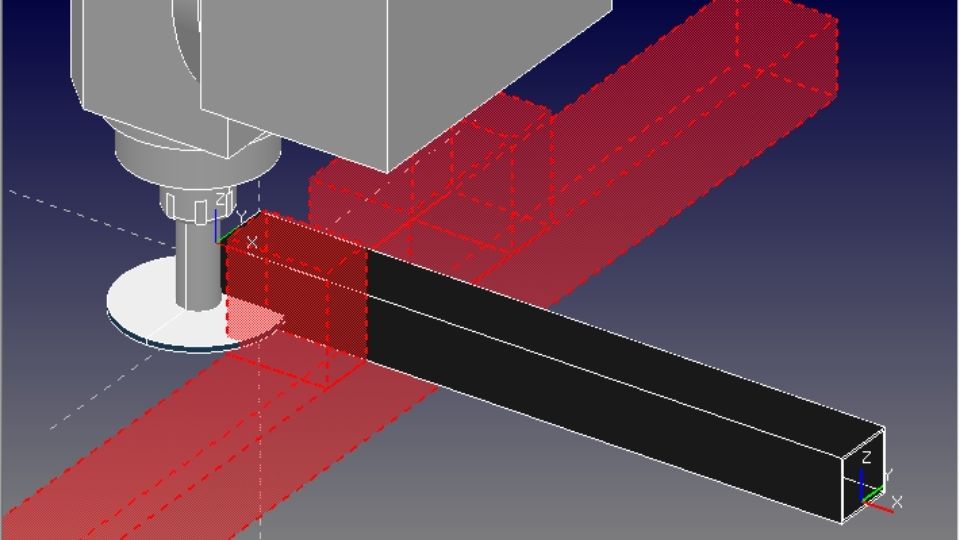
Profile milling exists as an elaborate process for manufacturing intricate details and sharp accuracy on workpieces. A multiple-step operational sequence leads to accurate final products that result from various stages. The complete profile milling operation works in the following way for execution:
The first step involves creating a design for the part, which will serve as the blueprint for the milling operation. Engineers establish the workpiece profile dimensions using CAD (Computer-Aided Design) software. The blueprint design acts as the operational guide for milling until all necessary details receive attention prior to starting the cutting process.
After designing the operation, the operator moves the data to the CNC (Computer Numerical Control) system. The CNC machine executes the pre-written toolpath instructions to produce the intended profile form. The design period allows users to perform adjustments and modifications to achieve high-accuracy results.
Among all the operations in profile milling tool selection stands as the fundamental decision that determines success. It requires significant knowledge and expertise about material nature alongside the profile intricacy level. The process usually requires three basic tools. These consist of end mills together with ball nose cutters, and form cutters. Every tool has its designated purpose within the profile milling process.
End Mill: The end mill functions best for producing straight edges and contours.
Ball Nose: The Ball Nose Cutters specifically serve 3D and curved shaping operations.
Form Cutters: Specialized tools named Form Cutters function to achieve detailed and complex profiles.
The correct choice of cutter allows determines efficient material machining, and tool longevity during work operations.
The operator uses the machine's worktable to mount and firmly attach the material while milling occurs. The spindle adjustment mechanism ensures that the cutting tool matches perfectly with the material surface.
When preparing setup the operator must also adjust cutting parameter settings such as feed rate together with spindle speed and depth of cut. The determined parameters directly impact the quality standards of the end product. The wrong settings for cutting parameters may lead to substandard finishing and defective tools.
The CNC system starts the milling process after the toolpath is successfully loaded. It travels with its cutting tool across material surfaces while executing the programmed profile. The operation removes materials through sequential layers during the workpiece transformation process until the design is completed.
The machine system executes continuous automated motion procedures to guarantee high precision alongside consistent results. More complicated profiles require the machine to execute multiple passes with decreasing material removal per cycle until it reaches the final finishing quality.
The operator adjusts tool feed rate and cutting depth together with spindle speed according to changes in material behavior. The process efficiency and cut quality benefit from these adjustments which keep the procedure running at optimum effectiveness.
The advanced CNC machines with adaptive control systems monitor milling process data to automatically modify their cutting parameters. This preserves optimum cutting conditions throughout the process.
The machine proceeds from rough profile cutting to the finishing operation. The final part dimensions are reached through successive cuts that refine the surface for smoothness. A smooth and accurate profile will be produced to satisfy all design requirements.
During this phase of operation the machine executes multiple minimal passes which eliminate any remaining material debris and rough surfaces. The surface achieves a precise level of detail which is now ready for quality assessments.
A thorough examination of the completed part takes place after the milling procedure finishes. Measuring tools such as calipers and coordinate measuring machines (CMM) check the dimensions and profile shape in line with the surface quality of the product. Since the product design serves as the benchmark all modifications are recorded followed by necessary corrections to the design.
The part proceeds to post-processing activities that may include finishings like heat treatment and surface coating, and polishing to obtain optimal strength and appearance.
After a successful inspection of the part, operators remove the part with care from the machine system. After cleaning off all remaining material chips, the part is ready for shipping or further assembly.
Specialized cutting tools are necessary for profile milling operations when producers aim to produce precise contours and shapes together with ideal surface finishes on their workpiece. The selection process for tools depends entirely on material type and profile complexity in addition to finish requirements. We will analyze the multiple tools employed in profile milling together with their applications and advantages in this section.
The milling process heavily relies on end mills. These rank as the primary tool for operation. A tool with cutting edges located at the tip and the sides allows users to cut in any direction between up and down.
The primary applications of end mills include generating flat areas as well as slots alongside accurate contours. End mills serve single purposes in roughing processes and finishing work. During profile milling operations, end mills offer the best solution for cutting straight lines and basic curves.
Types:
-Square End: Square end mills serve to produce accurate flat-bottomed cuts. These are optimally used for simple profile milling operations.
-Ball Nose: The ball nose end mill functions best when used for forming curved structures along with three-dimensional features because it excels at profiling intricate designs.
Benefits:
End mills are capable of cutting in multiple directions.
These can perform roughing and finishing operations.
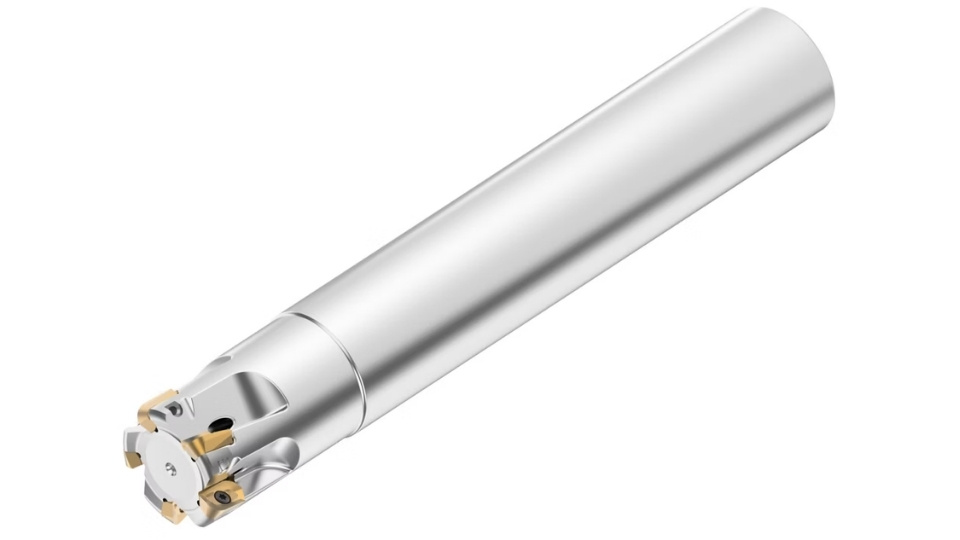
Ball nose cutters encompass spherical ends. It enables them to efficiently cut curved surfaces and produce 3D shapes. End mills with spherical tips are known under the names including "ball end mills."
Manufacturers use ball nose cutters to produce refined, intricate curved profiles as well as spherical shapes and detailed elements in molds, die casting, and 3D components..
Benefits:
These are excellent for high-precision contour milling.
Their rounded tip enables the production of finishes that have improved smoothness.
Types:
- Standard Ball Nose: These cutters provide excellent performance during 3D machining operations as well as profiling functions.
- Tapered Ball Nose: The tapered version of ball nose cutters enables continuous work on intricate fine-profile applications.
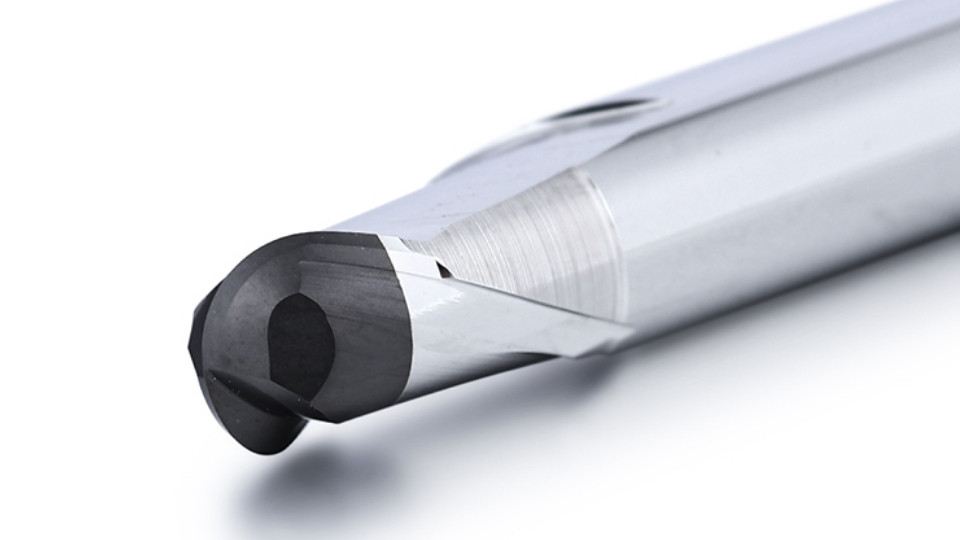
Form cutters are used to create precise, detailed profiles that require customized tool designs. These tools receive special fabrication to create customized shapes that serve unique and unusual contour cutting operations.
On the application side, these are used to produce advanced, complex profile shapes that standard tools cannot accomplish. Usually, it is used in mold-making operations because it provides precise and repeatable shapes.
Benefits:
Form cutters produce highly defined customized shapes.
Specialized form cutters find their primary application during limited production cycles that do not exceed one-time or small-scale manufacturing.
Types:
-Concave Form Cutters: For cutting concave shapes.
-Convex Form Cutters: These serve to produce convex shapes and rounded edges of parts.
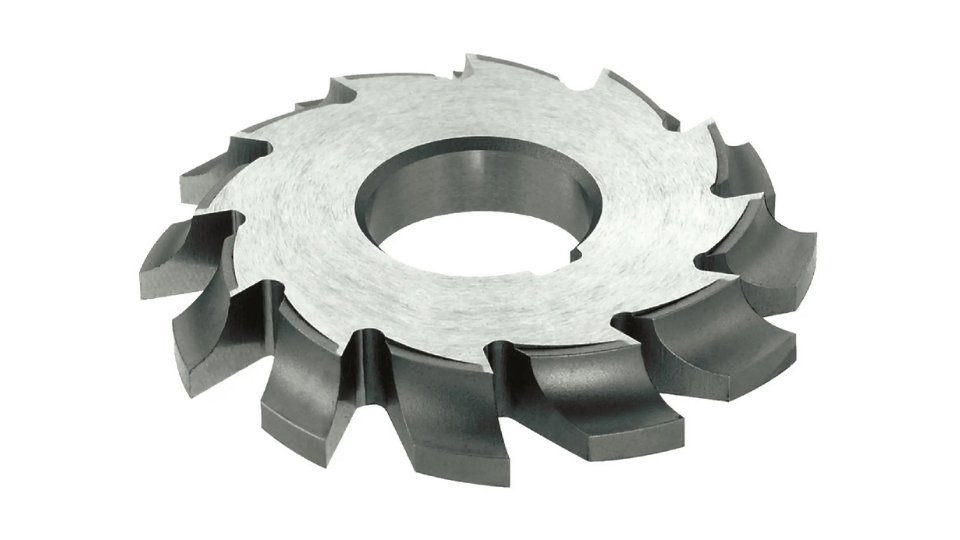
A face mill has multiple cutting edges on its surface. Such tools specialize in flat surface cutting and appear frequently during milling operations.
The core application of face mills remains flat surface cutting, yet they work suitably when handling shallow-profile milling operations. These tools can remove major material quantities while finishing extensive flat surfaces.
Benefits:
It can remove large amounts of material quickly.
It delivers accurate flat surface production using precise measures.
Types:
- Indexable Face Mills: These have replaceable cutting inserts that make the tool last longer.
- Solid Face Mills: These represent a single-piece construction material that is usually used for basic milling operations.
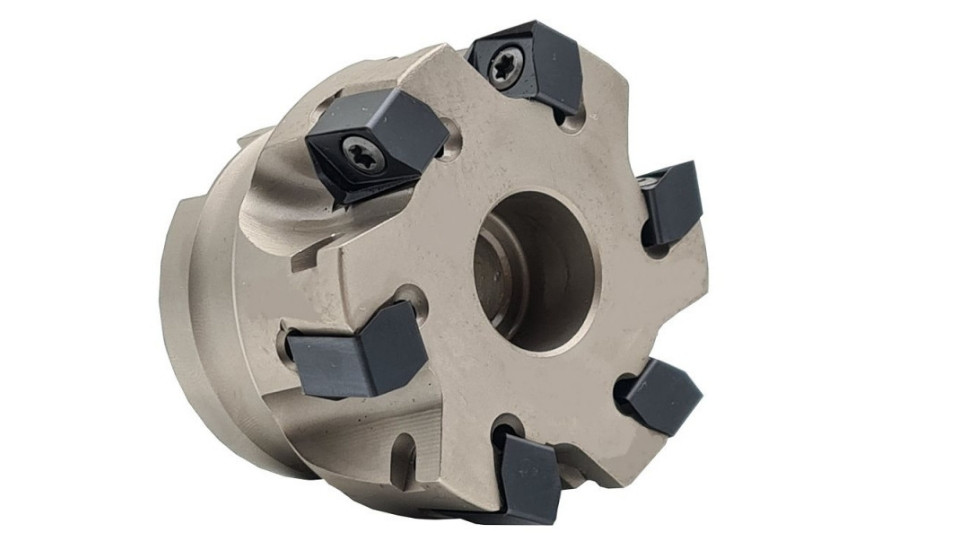
End mills with tapered features have cutting edges that gradually decrease in size from their base section until reaching the distal end. The tools' purpose is to make angled cuts. Additionally, it produces profiles that need slope or taper.
Tapered end mills are primarily used for manufacturing components featuring angled surfaces, undercuts, and tapers. These tools bring exceptional performance in mold-making and automotive areas, and aerospace part manufacturing when precise angles need to be generated.
Benefits:
These tools give excellent performance when milling accurate angled cuts and profiles.
Difficult to obtain undercuts and tapered geometries can be shaped through these tools.
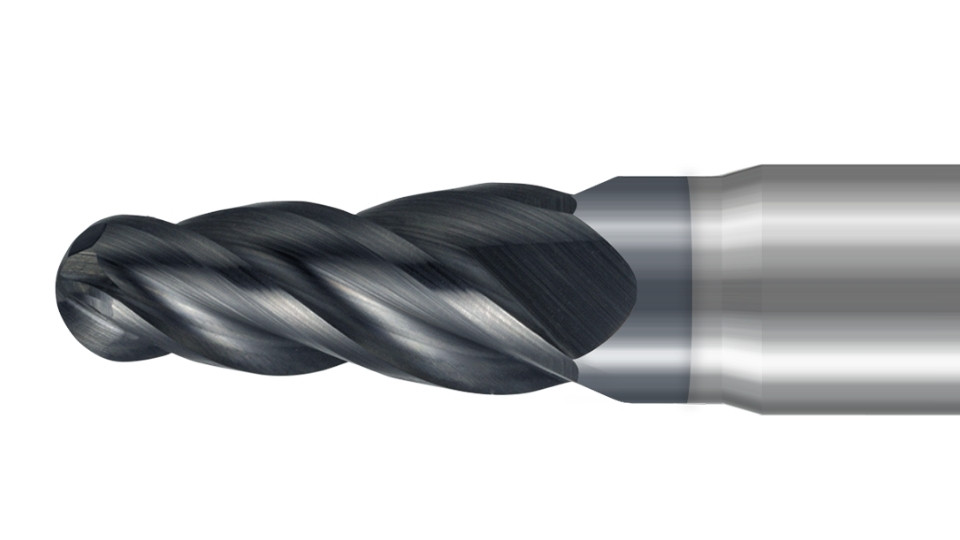
Dovetail cutters comprise a tapered cutting edge that produces dovetail joints and profiles. Special design elements built into these tools allow precise angle cutting of the material.
These cutters are typically used for jig production because their special design enables accurate angle cutting in precision fabrication. Moreover, these are the best for building dovetail slots for mold and tool components.
Three different techniques are used for high-quality profile milling that work on distinct profiles made from different materials.
The method of climb milling delivers operational motions that match the workpiece feed direction to cut materials from top to bottom. The material gets engaged by the cutter teeth from its upper edge as they move continuously downward.
Advantages:
During climb milling, the entry of cutting edges into the material at a moderate pace yields a superior surface finish because it minimizes tool wear.
Tool life extends because the process reduces the amount of strain endured by cutting tools.
It offers fast material removal when using CNC machines for operation.
The technique suits finishing operations and gives a smooth surface quality, especially during the processing of tough materials. When operators require exactness and desire extended tool service lifetime, climb milling is a go-to option.
The conventional milling technique, or up milling, makes the cutting tool work by advancing against the feed direction of the material. The cutting tool moves progressively upward, starting from the material's bottom surface to produce chip removal from the workpiece.
Advantages:
Up milling is notable for machining challenging material types, which tend to tear when processed.
Tool Engagement controls the cutting process more efficiently. This makes it suitable for working with unpredictable materials, and irregular workpieces.
Users should consider conventional milling for roughing operations as well as challenging materials that resist climb milling methods. People select this technique for cases where material hardness plays a larger role than dimensional accuracy.
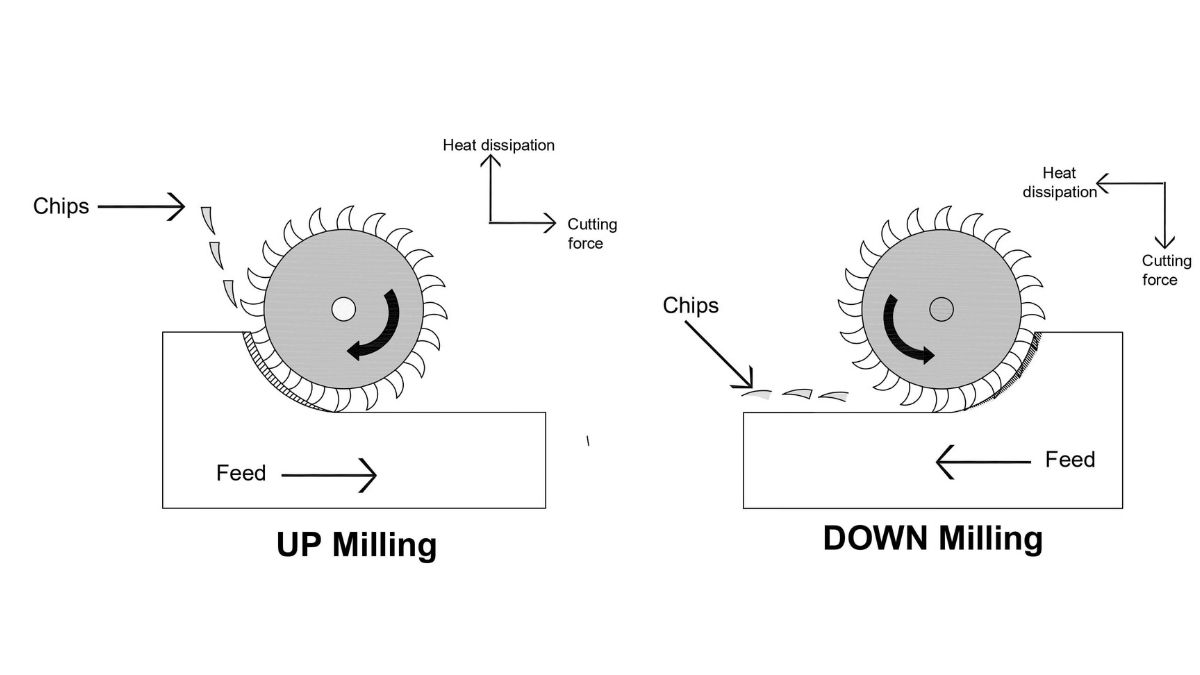
HSM conditions enable faster spindle rotation rates and higher feed rates than conventional mill operations. The software-generated optimum cutting paths enable efficient material removal without excessive tool wear.
Advantages:
Through HSM, manufacturers can generate complex shapes and achieve smooth finish quality.
Material production rates increase under this technique as it shortens production time and maximizes operational efficiency.
Tool durability extends beyond shorter periods. Because the higher speeds lower accumulated heat, which leads to better-cut quality.
High-speed machining should be implemented by manufacturers who need precision in their work, like aerospace and medical device producers.
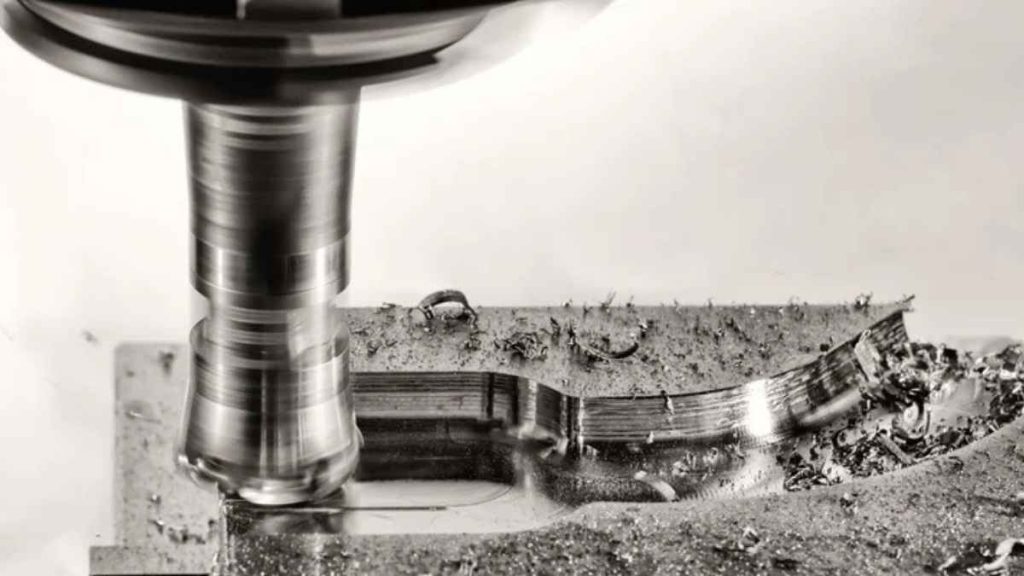
| Challenge | Best Practice |
| Tool Wear and Dulling | Monitor tool wear regularly and replace tools before they become inefficient. |
| Poor Surface Finish | Use proper cutting parameters, fine tools for finishing, and ensure stable machine conditions. |
| Excessive Heat Build-Up | Apply coolant or lubrication to reduce friction and heat during cutting. |
| Workpiece Movement | Secure workpieces tightly with clamps or fixtures to prevent shifting. |
| Chatter or Vibration | Adjust feed rates and cutting depths, and ensure machine stability to minimize vibration. |
| Inconsistent Cut Quality | Maintain consistent feed rates and ensure correct tool geometry for uniform cuts. |
| Tool Breakage | Use appropriate cutting speeds and feeds, and avoid deep cuts that may cause tool stress. |
Profile milling is an indispensable manufacturing operation for the precise shaping and smoothing of industrial parts. The process enables accuracy in manufacturing car engines and aircraft components, and machinery parts, along with operational efficiency. Manufacturers must select appropriate tools and techniques to obtain high-quality finished products. The advancements in technology will keep profile milling at the forefront of reliable product production.
